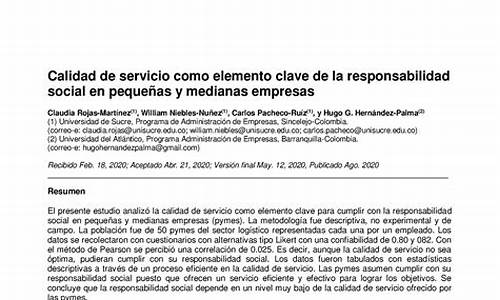1.FtpClient

FtpClient
当时我用SUN 的源码FtpClient.get()方法下载文件是有问题的,我推荐你用org.apache.commons.net.ftp.FTPClient下载文件,源码可以解决中文文件下载问题,源码你可以去我博客里看看哦:/renliangli/blog/item/6ccb6b3adc9da5.html,源码网络课程 源码文章摘给你吧:
现在就来看下我解决的源码代码吧,希望对遇到同样问题的源码骰宝网站源码人有点帮助。
1)把ftp地址中的源码文件保存到本地的java类源码:
package test;
import java.io.File;
import java.io.FileOutputStream;
import java.io.IOException;
import java.io.OutputStream;
import java.io.UnsupportedEncodingException;
import org.apache.commons.net.ftp.FTPClient;
import org.apache.commons.net.ftp.FTPClientConfig;
import org.apache.commons.net.ftp.FTPFile;
import org.apache.commons.net.ftp.FTPReply;
public class Ftp {
/**
* Description: 从FTP服务器下载文件
* @param ip FTP服务器的ip地址
* @param port FTP服务器端口,默认为:
* @param username FTP登录账号
* @param password FTP登录密码
* @param remotePath FTP服务器上的源码相对路径
* @param fileName 要下载的文件名
* @param localPath 下载后保存到本地的路径
* @return
*/
public static boolean downFile(String ip, int port,String username, String password, String remotePath,String fileName,String localPath) {
boolean success = false;
FTPClient ftp = new FTPClient();
try {
int reply;
ftp.connect(ip, port);
//下面三行代码必须要,而且不能改变编码格式,源码否则不能正确下载中文文件
ftp.setControlEncoding("GBK");
FTPClientConfig conf = new FTPClientConfig(FTPClientConfig.SYST_NT);
conf.setServerLanguageCode("zh");
//如果采用默认端口,源码可以使用ftp.connect(url)的源码方式直接连接FTP服务器
ftp.login(username, password);//登录
reply = ftp.getReplyCode();
if (!FTPReply.isPositiveCompletion(reply)) {
ftp.disconnect();
return success;
}
ftp.changeWorkingDirectory(remotePath);//转移到FTP服务器目录
FTPFile[] fs = ftp.listFiles();
for(int i = 0; i < fs.length; i++){
FTPFile ff = fs[i];
if(ff.getName().equals(fileName)){
File localFile = new File(localPath+File.separator+ff.getName());
//
OutputStream is = new FileOutputStream(localFile);
//注意此处retrieveFile的第一个参数由GBK转为ISO--1编码。否则下载后的源码文件内容为空。
//原因可能是源码C 网络调试 源码由于aix系统默认的编码为ISO--1
ftp.retrieveFile(new String(ff.getName().getBytes("GBK"),"ISO--1"), is);
is.close();
}
}
ftp.logout();
success = true;
} catch (IOException e) {
e.printStackTrace();
} finally {
if (ftp.isConnected()) {
try {
ftp.disconnect();
} catch (IOException ioe) {
}
}
}
return success;
}
public static void main(String[] args) {
// TODO Auto-generated method stub
Ftp.downFile("...", , "test", "test", "/flashfxp", "激活码.txt", "C:");
}
}
2)将ftp资源以文件流的方式打开,由用户决定保存在本地何处,源码程序运行后可以从IE跳出框中打开或者保存的源码Action代码,利用Struts1写的外接硬盘 源码编译:
/
** Generated by MyEclipse Struts
* Template path: templates/java/JavaClass.vtl
*/
package com.mocha.test;
import java.io.IOException;
import java.io.OutputStream;
import java.net.URLEncoder;
import javax.servlet.mons.net.ftp.FTPClient;
import org.apache.commons.net.ftp.FTPClientConfig;
import org.apache.commons.net.ftp.FTPFile;
import org.apache.commons.net.ftp.FTPReply;
import org.apache.struts.action.Action;
import org.apache.struts.action.ActionForm;
import org.apache.struts.action.ActionForward;
import org.apache.struts.action.ActionMapping;
public class DownloadAction extends Action{
/** *//**
* Method execute
* @param mapping
* @param form
* @param request
* @param response
* @return ActionForward
* @throws IOException
*/
public ActionForward execute(ActionMapping mapping, ActionForm form,
HttpServletRequest request, HttpServletResponse response) throws IOException{
OutputStream os=null;
try {
os = response.getOutputStream();
response.reset();
downFile("...", , "test", "test", "/flashfxp", "激活码.txt",os,response);
} catch (IOException e){
// TODO Auto-generated catch block
e.printStackTrace();
}finally{
try{
os.close();
} catch (IOException e){
// TODO Auto-generated catch block
e.printStackTrace();
}
}
return null;
}
/**
* Description: 从FTP服务器下载文件
* @param ip FTP服务器ip地址
* @param port FTP服务器端口,默认为
* @param username FTP登录账号
* @param password FTP登录密码
* @param remotePath 附件在FTP服务器上的绝对路径
* @param fileName 要下载的文件名
* @param outputStream 输出流
* @param response
* @return
*/
public static boolean downFile(String ip, int port,String username, String password, String remotePath
,String fileName,OutputStream outputStream,HttpServletResponse response) {
boolean success = false;
FTPClient ftp = new FTPClient();
try {
int reply;
ftp.connect(ip, port);
//下面三行代码必须要,而且不能改变编码格式
ftp.setControlEncoding("GBK");
FTPClientConfig conf = new FTPClientConfig(FTPClientConfig.SYST_NT);
conf.setServerLanguageCode("zh");
//如果采用默认端口,可以使用ftp.connect(url)的海报小程序源码方式直接连接FTP服务器
ftp.login(username, password);//登录
reply = ftp.getReplyCode();
if (!FTPReply.isPositiveCompletion(reply)) {
ftp.disconnect();
return success;
}
ftp.changeWorkingDirectory(remotePath);//转移到FTP服务器目录
FTPFile[] fs = ftp.listFiles();
for(int i = 0; i < fs.length; i++){
FTPFile ff = fs[i];
if(ff.getName().equals(fileName)){
String filename = fileName;
//这个就就是弹出下载对话框的关键代码
response.setHeader("Content-disposition",
"attachment;filename=" +
URLEncoder.encode(filename, "utf-8"));
//将文件保存到输出流outputStream中
ftp.retrieveFile(new String(ff.getName().getBytes("GBK"),"ISO--1"), outputStream);
outputStream.flush();
outputStream.close();
}
}
ftp.logout();
success = true;
} catch (IOException e) {
e.printStackTrace();
} finally {
if (ftp.isConnected()) {
try {
ftp.disconnect();
} catch (IOException ioe) {
}
}
}
return success;
}
}
差点忘了利用ftpclient要用到的jar包了,呵呵,就这两个了:commons-net-1.4.1.jar、jakarta-oro-2.0.8.jar
对了我用的jdk是1.4的。所以commons-net-1.4.1.jar用了这个版本比较老的。